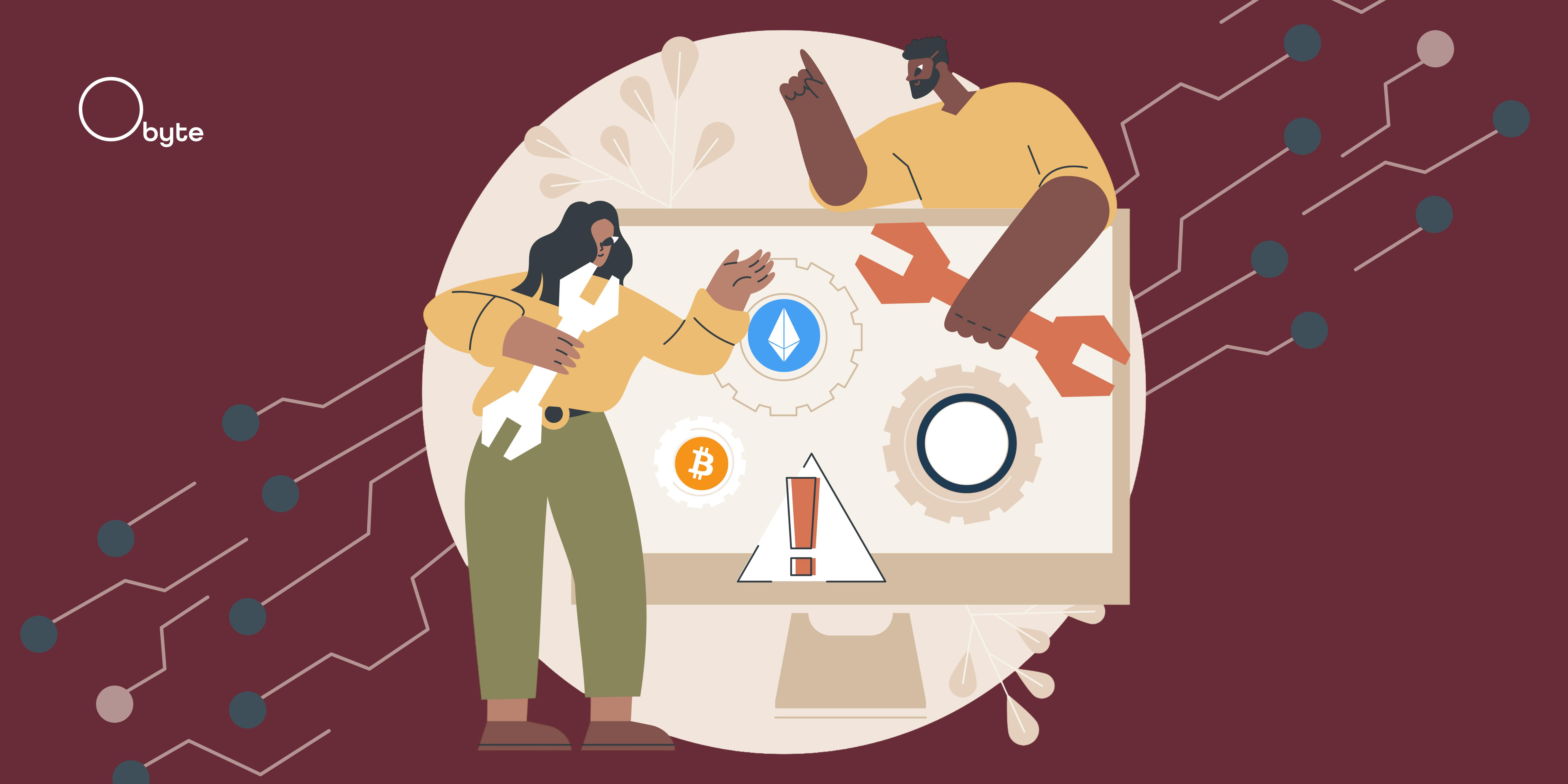Cryptocurrency is software handled with other software (wallets, exchanges, etc.), therefore, some technical issues are bound to happen here and there for its users. As with any other software, these problems are occasional and not everyone experiences them. Also, they’re often related to something the user did or didn’t do, and are easily fixable. Crypto troubleshooting may vary widely among different platforms and networks, but some common issues have easy solutions, without waiting for support.
Whether transferring funds, managing private keys, or dealing with network settings, crypto users may face some technical hiccups. Understanding how deposits, withdrawals, and fees work can prevent common mistakes while knowing what to do in case of lost access or incorrect transactions can save time and stress. Let’s explore some cases.
Loss of Devices or Private Keys
You’ll need to remember this, always: cryptocurrencies aren’t banks or companies. There’s no “I forgot my password” button to recover your funds. The greatest strength of decentralized cryptocurrencies can also be their biggest drawback—it all depends on personal responsibility. Private keys are the sole means of accessing funds, giving owners complete control. However, because only they have access to these keys, losing them means losing their funds permanently, with no way to recover them or seek assistance.
Now, if you lost the device (mobile, desktop, or another) where you had your crypto wallet, that does have a very easy solution, at least for funds. The coins were never there, in the first place. Just go to another (personal) device, download the wallet app of your preference, and, instead of creating a new wallet, select the option to recover a wallet. Type your private keys there, and voilá.
It’s important to note that this works only for public token funds in Obyte. The private assets, like Blackbytes, and other data stored in the wallet (private profiles, smart contracts, prosaic contracts, contracts with arbitration, chats, contacts, etc.) are stored in the user’s device. Therefore, you must make separate backups for this data.
On the other hand, if you don’t remember your private keys or lost the paper/metal tag on which you have written them, but still have access to the digital app, you can recover your seed from there again if the function is still available. If it’s not, run and transfer all the funds to another wallet of your own (with private keys) before it’s too late.a
Deposits & Withdrawals
Depositing and withdrawing cryptocurrency can sometimes be tricky, especially for beginners. The process varies depending on whether you’re using a centralized exchange (CEX) or a non-custodial wallet or a decentralized exchange (DEX). In centralized exchanges (companies that offer this service, like Binance
Additionally, most centralized exchanges have deposit and withdrawal limits, which may require identity verification (
Decentralized Trading
On decentralized exchanges and wallets, the process is more self-managed, meaning there’s often no customer support to assist with failed transactions. These aren’t that common, though. One key issue can be liquidity—certain tokens may not have enough buy/sell activity, causing delays or price slippage. That’s the difference between the expected price of a trade and the actual price at which it is executed, usually due to low liquidity or high market volatility. You could lose important percentages this way, but the DEX will always warn you.
Network congestion can also lead to longer confirmation times and higher fees. Constantly ensure you have enough balance to cover gas fees, as all non-native tokens (
Regardless of the platform, always confirm the wallet address before sending funds, as crypto transactions cannot be reversed. If you experience issues, checking transaction explorers can provide insight into what went wrong. Most wallets offer links to chain explorers in every transaction.
Incorrect Address or Network
Sending cryptocurrency to the wrong address or network is a common mistake, often caused by human error, scams, or malware. Scammers use tactics like
To avoid these threats, always double-check the address character by character before confirming a transaction, and consider using a hardware wallet with a secure display for address verification. Some digital wallets,
If coins are mistakenly sent to an unknown address, recovery is nearly impossible unless the recipient willingly returns them. You could send them a message (data) through another transaction if the network allows this function. For instance, this is possible through memos or tags in Ripple and Stellar,
Wrong Networks
If funds are sent to the wrong network or chain, recovery may be possible
However, non-compatible networks, such as Ethereum and Algorand, use different address structures, meaning tokens sent across them (if the transaction doesn’t fail before being sent) are often lost permanently. Before transferring funds, always confirm the correct network and use
In cases where funds are sent to an exchange by mistake, contacting their support team may help, though success depends on their policies. As a preventive measure, always test with a small amount first, ensure you are using the correct address, and verify network compatibility before making significant transactions. As a last resource, you could hire a company that specializes in funds recovery, like CNC Intelligence or CipherBlade. They may not succeed, though, and note that there are a lot of scammers claiming to be able to help with funds recovery. Always do your own research.
Troubleshooting in Obyte
We follow general crypto best practices here: always back up your private keys, double-check addresses before sending (or better yet, use textcoins or attestations), and ensure you have enough GBYTE to cover transaction fees. If you’re using our decentralized exchanges (
For private transactions, a “too many messages” error when sending
Featured Vector Image by vectorjuice /
















